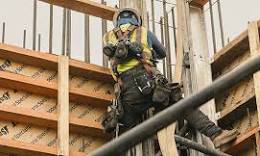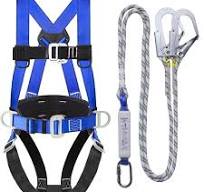The Importance of Full Body Harness in Fall Protection
Falls are one of the leading causes of workplace injuries and fatalities, especially in industries that involve working at heights. To mitigate the risks associated with falls, using proper fall protection equipment is crucial. One essential piece of equipment that plays a significant role in fall protection is the full body harness.
A full body harness is designed to distribute the force of a fall across the wearer’s body, reducing the risk of injury. It consists of straps that secure around the shoulders, chest, waist, and legs, creating a secure connection between the worker and an anchor point. In the event of a fall, the full body harness helps to arrest the fall and prevent free-fall injuries.
Key features of a full body harness include adjustable straps for a comfortable fit, multiple attachment points for connecting to lanyards or lifelines, and sturdy buckles or fastenings for secure closure. It is important to ensure that the harness fits properly and is worn according to manufacturer guidelines to maximize its effectiveness.
Employers have a responsibility to provide appropriate fall protection equipment, including full body harnesses, and ensure that workers are trained on how to use them correctly. Regular inspections and maintenance of harnesses are also essential to identify any signs of wear or damage that could compromise safety.
In conclusion, full body harnesses are critical components of fall protection systems that help safeguard workers at height. By investing in quality harnesses, providing adequate training, and enforcing proper usage protocols, employers can create safer work environments and reduce the risk of falls and injuries.
Understanding Full Body Harnesses: Key FAQs Answered
- What is a full body harness?
- How does a full body harness work?
- Why is a full body harness important in fall protection?
- How should a full body harness fit?
- What are the key features of a quality full body harness?
- What training is required for using a full body harness?
What is a full body harness?
A full body harness is a vital piece of fall protection equipment designed to secure a worker in a high-risk environment. It consists of straps that wrap around the shoulders, chest, waist, and legs, creating a secure connection between the wearer and an anchor point. In the event of a fall, the full body harness helps distribute the force of impact across the body, reducing the risk of injury. It typically features adjustable straps for a customized fit, multiple attachment points for connecting to lanyards or lifelines, and durable buckles for secure closure. Proper training on how to wear and use a full body harness is essential to ensure maximum safety and protection while working at heights.
How does a full body harness work?
A full body harness works by securely wrapping around the wearer’s shoulders, chest, waist, and legs to create a connection between the worker and an anchor point. In the event of a fall, the harness distributes the force of impact across the body, reducing the risk of injury. The multiple attachment points on the harness allow for connection to lanyards or lifelines, which further enhance fall protection by providing a means of arrest. Properly fitted and worn according to manufacturer guidelines, a full body harness acts as a critical safety device that helps prevent free-fall injuries and protects workers at height.
Why is a full body harness important in fall protection?
A full body harness is crucial in fall protection because it serves as a vital safety measure to mitigate the risks associated with falls from heights. By distributing the force of a fall across the wearer’s body, a full body harness helps to reduce the impact on specific areas, thus minimizing the likelihood of serious injuries. Additionally, the multiple attachment points on a full body harness provide secure connections to lanyards or lifelines, ensuring that the wearer remains safely connected to an anchor point in the event of a fall. Overall, wearing a full body harness is essential for workers at height to enhance their safety and prevent potential accidents that could result in severe harm or even fatality.
How should a full body harness fit?
When it comes to wearing a full body harness, proper fit is essential for ensuring maximum safety and effectiveness. The harness should fit snugly but comfortably, with all straps adjusted to prevent excessive movement or slippage during use. The shoulder straps should be positioned securely over the shoulders without twisting, and the chest strap should sit at mid-chest level. The leg loops should be snug but allow for freedom of movement, and the waist belt should be positioned at the waist, not higher on the torso. It is crucial to follow the manufacturer’s guidelines for fitting the harness correctly to ensure that it provides optimal protection in the event of a fall. Regular checks and adjustments may be necessary to maintain a proper fit over time.
What are the key features of a quality full body harness?
When considering a quality full body harness, several key features are essential to ensure optimal safety and performance. These features include adjustable straps for a customized and secure fit, multiple attachment points to connect to lanyards or lifelines from various angles, sturdy buckles or fastenings for reliable closure, ergonomic padding for comfort during extended wear, durable construction materials that meet industry standards for strength and durability, and clear labeling indicating compliance with relevant safety regulations. It is crucial to prioritize these features when selecting a full body harness to effectively protect workers at height and minimize the risk of falls and injuries.
What training is required for using a full body harness?
Training for using a full body harness is essential to ensure the safety of workers at height. Proper training should cover topics such as how to properly don and adjust the harness, how to inspect it for any signs of wear or damage, how to connect it to anchor points, and how to safely use lanyards or lifelines with the harness. Additionally, training should include information on fall protection regulations and best practices for working at heights. Employers are responsible for providing comprehensive training to workers who will be using full body harnesses and ensuring that they understand and follow all safety protocols.



